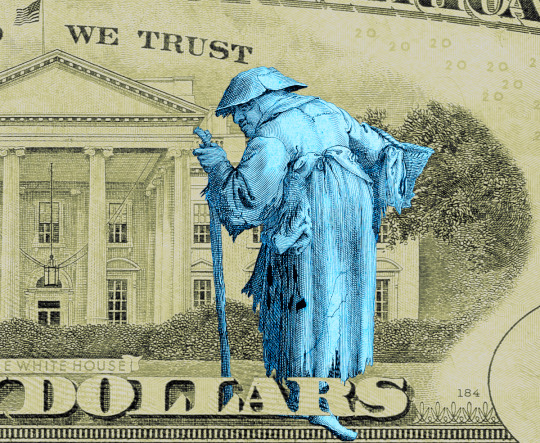#old age
Explore tagged Tumblr posts
Text
Drunken confessions? Destiel at a retirement home??
That's right. Two excellent things for the price of one, now available on AO3.
A Glass of Wine Over Lunch
Summary: Dean's lunches with Cas are the best part of his day. He even drinks a glass of wine every time, because Cas is a sucker for red wine and Dean is a sucker for Cas.
One day, Dean decides to pour himself a second glass (and then a third). Consequences ensue.
Read it now on AO3
#destiel#deancas#spn#destiel fic#supernatural#dean winchester#deancas fic#castiel#dean x castiel#alternate universe#old age#retirement#friendofcarlotta writes
30 notes
·
View notes
Text

Untitled by MILFCOOKIESIMP
520 notes
·
View notes
Text

Until April 25th, I’m offering 50% off the first month at patreon.com/CardboardCrack. This will give you access to 741 posts, including early and exclusive comics, behind the scene looks, my deck breakdowns, and even playmats depending on the tier. Just use the code 50PERCENT at checkout. Thanks!
79 notes
·
View notes
Text

"Old-age" the very thought strikes fear in many hearts. It's mainly due to the concerns it brings with it. Concerns of ill-health, financial instability, and so on and so forth. But the Lord reassures us,
"Even to your old age, I am He, And even to gray hairs I will carry you! I have made, and I will bear; Even I will carry, and will deliver you." Isaiah 46:4
Just as Jesus was with you when you were young and energetic, He will be with you during your middle age and your twilight days as well. He will strengthen you, He will help you and sustain you all the days of your life. When your strength starts to fail, He will carry you through. When it's time for us to leave this earth Jesus will take us safely to heaven, where we will be with Him forever and ever. Hallelujah!
#old age#the elderly#bible verse#daily devotional#christian quotes#bible quotes#inspiration#daily devotion#christian quote#christian life#scripture#bible
148 notes
·
View notes
Text

#art#painting#masterpiece#allegory#ice#winter#old age#death as comforter#ahasuerus at the end of the world 1888#adolf hiremy hirschl#romanticism
223 notes
·
View notes
Text

Seriously, that's what happened to me.
32 notes
·
View notes
Text

Quaeris, quid doceam? Etiam seni esse discendum.*
Seneca
You ask, what may I teach? That an old man must learn too.*
Marcel Duchamp plays chess with Eve Babitz, 1963.
#seneca#latin#classical#quote#old age#wisdom#maturity#ageing#growing old#teaching#eve babitz#chess#marcel duchamp#arts#culture#art
1K notes
·
View notes
Text
Age is giving me the two best gifts: softness and illumination. It would have been nice if whoever is in charge of such things doled them out in our younger years, but that’s not how it works. Age ferries them across the water, and they will bring us through whatever comes.
— Anne Lamott, from "All that is true about aging is illuminated on a walk" (NY Times, March 14, 2024)
194 notes
·
View notes
Text

An Old Woman, Vilhelm Hammershøi, 1886
#art#art history#Vilhelm Hammershøi#portrait#portrait painting#old age#old age in art#Danish art#Scandinavian art#19th century art#oil on canvas#Hirschsprung Collection
82 notes
·
View notes
Text
The Voyage Of Life
Artist: Thomas Cole (American, 1801-1848)
Date: 1842
Medium: Oil paintings
Collection: National Gallery of Art, Washington, DC, United States
Description
The Voyage of Life is a series of four paintings created by the American artist Thomas Cole in 1840 and reproduced with minor alterations in 1842, representing an allegory of the four stages of human life. The paintings, Childhood, Youth, Manhood, and Old Age, depict a voyager who travels in a boat on a river through the mid-19th-century American wilderness. In each painting the voyager rides the boat on the River of Life accompanied by a guardian angel. The landscape, each reflecting one of the four seasons of the year, plays a major role in conveying the story. With each installment the boat's direction of travel is reversed from the previous picture. In childhood, the infant glides from a dark cave into a rich, green landscape. As a youth, the boy takes control of the boat and aims for a shining castle in the sky. In manhood, the adult relies on prayer and religious faith to sustain him through rough waters and a threatening landscape. Finally, the man becomes old and the angel guides him to heaven across the waters of eternity.

Voyage Of Life: Childhood
In the first painting, Childhood, all the important story elements of the series are introduced: the voyager, the angel, the river, and the expressive landscape. An infant is safely ensconced in a boat guided by an angel. The landscape is lush; everything is calm and basking in warm sunshine, reflecting the innocence and joy of childhood. The boat glides out of a dark, craggy cave which Cole himself described as "emblematic of our earthly origin, and the mysterious Past." The river is smooth and narrow, symbolizing the sheltered experience of childhood. The figurehead on the prow holds an hourglass representing time.
In the first version of this work, Cole shows less landscape on the right side and thus does not include the river winding to the horizon. The perspective is also different: in the original, the boat is in the foreground, while in the second, Cole moves the boat deeper in the picture and portrays more of the river in the foreground.

Voyage of Life: Youth
The second painting, Youth, shows the same lush, green landscape, but here the view widens as does the voyager's life experience. Now the youth has firm hold of the tiller as the angel watches and waves from the shore, allowing him to take control. The subject's youthful enthusiasm and energy is evident in his forward-thrusting pose and billowing clothes. In the distance, an ethereal citadel towers in the sky, a shimmering white beacon that represents the dreams and ambitions of humanity.
Detail of Thomas Cole's The Voyage of Life: Youth: shows the boy departing in the boat; the angel bids him farewell from the shore. To the youth, the tranquil river appears to lead directly to the shimmering beacon, but at the far right of the painting one can just glimpse the river as it changes to become rough and difficult with the danger of rocks.
Cole comments on the landscape and the youth's ambitions: "The scenery of the picture—its clear stream, its lofty trees, its towering mountains, its unbounded distance, and transparent atmosphere—figure forth the romantic beauty of youthful imaginings, when the mind elevates the mean and common into the magnificent, before experience teaches what is the Real.

Voyage of Life: Manhood
Third in the series, Manhood, shows a now grown figure in the vessel, amid the tribulations of adult life. Storm clouds ominously darken the sky, wind whips at the man's clothing and rain falls in the background as the boat approaches a treacherous part of the river which has become rocky and rapid, running through a treacherous gorge marked by a gnarled, leafless tree. Gentler country lies at the bottom of the defile and the distant sky line lightens in that direction hinting of the hope of better times ahead. Among the dangers the man has not lost his faith: he has let go of his boat's tiller (which may have broken) and is part kneeling, gazing upward with hands clasped together. The vessel's figurehead now holds the hourglass while far above, behind and unseen by the voyager, his guardian angel continues to watch over from the Heavens, shining brightly through a break in the clouds. Cole writes:
Trouble is characteristic of the period of Manhood. In Childhood there is no cankering care; in Youth no despairing thought. It is only when experience has taught us the realities of the world, that we lift from our eyes the golden veil of early life; that we feel deep and abiding sorrow; and in the picture, the gloomy, eclipse-like tone, the conflicting elements, the trees riven by tempest, are the allegory; and the Ocean, dimly seen, figures the end of life, to which the voyager is now approaching. The demon forms are Suicide, Intemperance, and Murder, which are the temptations that beset men in their direst trouble. The upward and imploring look of the voyager, shows his dependence on a Superior Power, and that faith saves him from the destruction that seems inevitable.
Manhood contains the most differences between the original 1840 version and the revised 1842 version. The modified version shows a reduction in the wall of rocks and more of the distant sea. As in Childhood, he repositioned the boat, moving it further back in the painting and closer to the rapids. He also modified the stance of the voyager, from standing in the original to kneeling in the replica.

Voyage of Life: Old Age
The final painting, Old Age, is an image of death. The man has grown old; he has survived the trials of life. The waters have calmed, the river flows into the waters of eternity. The figurehead and hourglass are missing from the battered boat; the withered old voyager has reached the end of earthly time. In the distance, an angel descends from heaven, while the guardian angel hovers close, gesturing toward the other. The man is once again joyous with the knowledge that Faith has sustained him through this perilous life to the promise of Heaven. The landscape is practically gone, just a few rough rocks represent the edge of the earthly world, and dark water stretches onward. Cole describes the scene: "The chains of corporeal existence are falling away; and already the mind has glimpses of Immortal Life.
Cultural Significance
The Voyage of Life was well received by critics and the public; the United States was experiencing the religious revival sometimes known as the Second Great Awakening. The four paintings were converted to engravings by James Smillie (1807–1885) after Cole's death and the engravings widely distributed in time for the Third Great Awakening, giving the series the prestige and popular acclaim it retains today
#voyage of life#youth#old age#manhood#american culture#allegorical art#landscape#painting#oil painting#artwork#fine art#american art#childhood#angel#boat#river#mountains#voyage#american painter#thomas cole#19th century painting#national gallery of art
69 notes
·
View notes
Text
Biden wants to ban ripoff “financial advisors”

I'll be at the Studio City branch of the LA Public Library on Monday, November 13 at 1830hPT to launch my new novel, The Lost Cause. There'll be a reading, a talk, a surprise guest (!!) and a signing, with books on sale. Tell your friends! Come on down!

Once, American workers had "defined benefits pensions," where their employers promised to pay them a certain amount every year from their retirement to their death. Jimmy Carter swapped that out for 401(k)s, "market" pensions where you have to guess which stocks will be valuable or starve in your old age:
https://pluralistic.net/2020/07/25/derechos-humanos/#are-there-no-poorhouses
The initial 401(k) rollout had all kinds of pot-sweeteners that made them seem like a good deal, like heavy employer matching that doubled or even tripled the value of every dollar you put into the market for your retirement. But over the years, as Reaganomics took hold and workers' power ebbed away, all these goodies were clawed back. In the end, the market-based pension makes you the sucker at the poker table, flushing your savings into a rigged casino that is firmly tilted in favor of finance barons and other eminently guillotineable plutocrats.
Neoliberalism is many things, but most of all it is a cult of individualism. The fact that three generations of workers are nows facing down retirement without pensions that will provide them with secure housing and food – let alone money to see the odd movie, buy birthday gifts for their grandkids, or enjoy a meal out now and then – is framed as millions of individual failures, not a systemic one.
In other words, if you are facing food insecurity and homelessness after a lifetime of hard work, it's because you saved wrong. Perhaps you didn't save enough (through a 40-year run of wage stagnation and skyrocketing housing, health and education costs). Or perhaps you saved wrong, making the wrong bets on the stock market. If you can't afford to run your air conditioner during a heat dome, that's on you: you should have been better at stocks.
Apologists for this system will say that you don't have to be good at stocks – you just have to pay an Independent Financial Advisor to pick the stocks for you and you'll be fine. But IFAs don't work for free! What if you can't afford one?
Enter "predatory inclusion" – the practice of offering scammy, overpriced and substandard products to poor people and declaring it to be a good deed, because otherwise, those poor people would have to do without. The crypto bubble relied heavily on this: think of Spike Lee and others shilling for pump-and-dump scams as a way of "building Black wealth":
https://www.nytimes.com/2021/07/07/business/media/cryptocurrency-seeks-the-spotlight-with-spike-lees-help.html
More recently, Intuit and other scammy tax-prep services have argued against the IRS's plan to offer free tax preparation as bad for Black and brown people, because it will deny them the chance to be deceived and ripped off with TurboTax:
https://pluralistic.net/2023/09/27/predatory-inclusion/#equal-opportunity-scammers
Back in 2018, Trump won the predatory inclusion Olympics, when his Department of Labor let the Fifth Circuit abolish the "Fiduciary Rule" for Independent Financial Advisors:
https://www.investopedia.com/updates/dol-fiduciary-rule/
What was the Fiduciary Rule? It said that your IFN had to put your interests ahead of their own. Like, if there were two different funds you could bet on, and one would pay your IFN a big commission, while the other would be a better bet for you, the IFN couldn't put your retirement savings into the fund that offered them a bribe.
When Trump killed the Fiduciary Rule, he proclaimed it a victory for poor people, especially Black and brown people. After all, if IFNs weren't allowed to accept bribes for giving you bad financial advice, then they would have to make up the difference by charging you for good advice. If you couldn't afford that advice, well, you'd have to make bad retirement investments on your own, without the benefit of their sleazy self-dealing.
The Biden Administration wants to change that. Biden's Acting Labor Secretary is Julie Su, and she's very good at her job. Last spring, she forced west coast dockworkers' bosses to cough up the contract they'd stalled on for a year, with 8-10% raises for every worker, owed retroactively:
https://pluralistic.net/2023/06/16/that-boy-aint-right/#dinos-rinos-and-dunnos
Su has proposed a way to reinstate the Fiduciary Rule, as part of the Biden Administration's war on junk fees, estimating that this will increase retirees' net savings by 20%:
https://prospect.org/labor/2023-11-07-julie-su-labor-retirement-savers/
The new rule will force advisors who cheat their clients to pay restitution, and will require them to deliver all their advice in writing so that this cheating can be detected and punished.
The industry is furious, of course. They claim that "The Market (TM)" will solve this: if you get bad retirement savings advice and end up homeless and starving, then you will choose a different advisor in your next life, after you are reincarnated (I guess?).
And of course, they're also claiming that forcing IFNs to stop cheating their clients will deny poor people access to expert (bad) advice. As the Financial Services Institute's Dale Brown says, this will have a "negative impact on Main Street Americans’ access to financial advice":
https://www.fa-mag.com/news/legal-challenge-predicted-for-new-dol-fiduciary-proposal-75257.html
Here's that rule – read it for yourself, then submit a comment expressing your views on it. The government wants to hear from you, and administrative law requires them to act on the comments they receive:
https://www.federalregister.gov/documents/2023/11/03/2023-23782/proposed-amendment-to-prohibited-transaction-exemptions-75-1-77-4-80-83-83-1-and-86-128
Su is part of a wave of progressive, technically skilled regulators in the Biden administration that resulted from a horse-trading exercise called the Unity Task Force, which divvied up access to top appointments among the progressive wing and the finance wing of the Democratic Party. The progressive appointments are nothing short of incredible – the most competent and principled agency leaders America has seen in half a century:
https://pluralistic.net/2023/10/23/getting-stuff-done/#praxis
But then there's the finance wing's appointments, like Judge Jacqueline Scott Corley, who ruled against Lina Khan's attempt to block the rotten Microsoft/Activision merger (don't worry, Khan's appealing):
https://pluralistic.net/2023/07/14/making-good-trouble/#the-peoples-champion
Perhaps the worst, though, is Biden's Secretary of Commerce Gina Raimondo, a private equity ghoul who did a stint for the notorious wreckers Bain Capital before founding her own firm. Raimondo has stuffed her department full of Goldman Sachs alums, and has sidelined labor and civil society groups as she sets out to administer everything from the CHIPS Act to regulating ChatGPT.
As Henry Burke writes for the Revolving Door Project and The American Prospect, Raimondo's history as a corporate raider, her deference to the finance sector, and she and her husband's conflicts of interest from their massive stakes in companies she's regulating all serve to undermine Biden's agenda:
https://prospect.org/economy/2023-11-08-commerce-secretary-gina-raimondo-undercutting-bidenomics/
When the administration inevitably complains that its popular economic programs aren’t breaking through the media coverage, they’ll have no one to blame but themselves.
The Unity Task Force gave us generationally important policymakers, but ultimately, it's a classic "pizzaburger." If half your family wants pizza, and the other half wants burgers, and you serve them something halfway in between that makes none of them happy, you haven't made a wise compromise – you've just made an inedible mess:
https://pluralistic.net/2023/06/17/pizzaburgers/

If you'd like an essay-formatted version of this post to read or share, here's a link to it on pluralistic.net, my surveillance-free, ad-free, tracker-free blog:
https://pluralistic.net/2023/11/08/fiduciaries/#but-muh-freedumbs
#pluralistic#julie su#fiduciary rule#intergenerational warfare#aging#retirement#401ks#old age#pensions#finance#pizzaburgers#Gina Raimondo
273 notes
·
View notes
Text

Jorge Luis Borges, "Two Forms of Insomnia"
#jorge luis borges#dark academia#litblr#literature#quotes#poetry#literary quotes#lit#poetry fragments#aging#growing older#longevity#old age
23 notes
·
View notes


